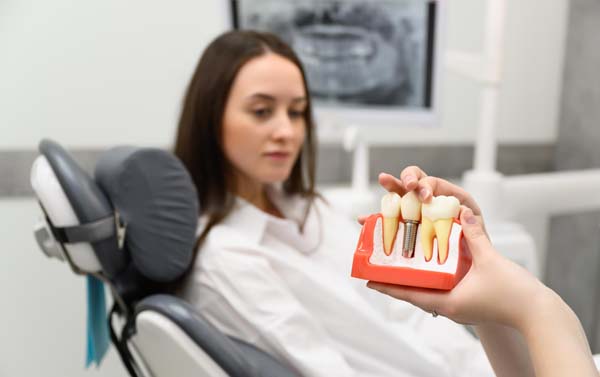What Happens if My Child Doesn’t Go to the Orthodontist?

Many parents believe evaluation and treatment by an orthodontist should not be scheduled until after a child has lost all of their baby teeth, usually in the preteen or early teenage years. In addition, some view orthodontics as a purely aesthetic treatment and often-desired but not truly necessary. However, most dental professionals recommend that parents bring their child in for an initial exam at a young age. Children and adults who do not see an orthodontist for evaluation and potential treatment are at risk for developing serious conditions beyond just a crooked set of teeth.
The importance of orthodontic evaluation in early childhood
The American Association of Orthodontists recommends that children who display the signs of future orthodontic issues be seen by the age of seven. This is much younger than many parents assume treatment should begin but can be vital in a young patient's treatment plan and outcome. Young children whose upper and/or lower jaw are not growing or shaping properly can utilize early intervention devices to help prevent the need for future surgeries.
For many patients, headgear worn at home can help with an underbite, while a retainer-like appliance called a bionator can help treat severe overbite in young children. These devices can also help permanent teeth grow in properly, making alignment treatments, such as braces or clear aligner trays, much easier in the future.
Risks of neglecting orthodontic treatment
There are several reasons parents should not dismiss orthodontic treatment for their children. While many of the negative side effects impact children immediately, other conditions can develop or worsen over time.
Unsightly teeth
A crooked smile can be unsightly and impact children for the rest of their lives. Poor alignment can negatively impact self-esteem, affecting social and professional relationships and opportunities. In addition, gaps caused by crooked teeth can continue to shift and worsen over time.
Improper bite formation
Poor alignment is either caused by or can often lead to improper bite formation. In these cases, the teeth have shifted and do not meet properly for effective biting and chewing. This issue can lead to more serious problems of the jaw down the road.
Jaw tension, pain or surgery
When crooked teeth or an improperly shaped jaw result in poor bite alignments, this can create tension and pain in the jaw. The condition may often worsen over time and could lead to the development of TMJ or other serious conditions. In some cases, surgery is needed to correct the problem and relieve chronic pain.
Conclusion
While most traditional orthodontic treatments do not begin until all baby teeth have fallen out, parents of children with orthodontic issues should not wait until this stage to seek initial evaluation. By seeing an orthodontist by age seven, the development of serious alignment issues can be prevented through early treatment. In addition, addressing the issues at a young age can help make future treatment with braces or other aligners more efficient and less invasive. No matter what the age of the patient, orthodontic treatment should not be neglected, as teeth alignment issues can lead to serious complications.
Request an appointment here: http://www.pricefamilyortho.com or call Price Family Orthodontics at (972) 528-5519 for an appointment in our Frisco office.
Check out what others are saying about our dental services on Yelp: Orthodontist in Frisco, TX.
Related Posts
Professional teeth whitening treatments are one of the most effective ways to improve the way your teeth look drastically. These treatments use bleaching agents like hydrogen peroxide and hydrogen carbamide to bleach stains and discoloration away from teeth.A single whitening treatment performed by a dentist can improve the color of a person's teeth by up…
Many people need to find an orthodontist on the weekend. Whether work or school schedules prevent a visit during normal business hours or an orthodontic emergency occurs, the weekend is often the only time available. Keep reading for tips on locating an orthodontist who takes weekend appointments.Getting an appointment on the weekend is possible. However,…
The first thing to do when experiencing a toothache is to assess the tooth and surrounding area. Sometimes, the reason for a toothache is obvious; other times, not so much. Depending on the cause of a toothache, seeking the help of an orthodontist may be more appropriate than a general dentist. The following article will…
Doing a web search for "Invisalign near me" may seem like simple research, but there are several important factors to keep in mind before starting treatment. Invisalign is a popular option for individuals seeking a straighter smile without the noticeable appearance of traditional braces. Each orthodontic office may offer a slightly different experience, so understanding…
